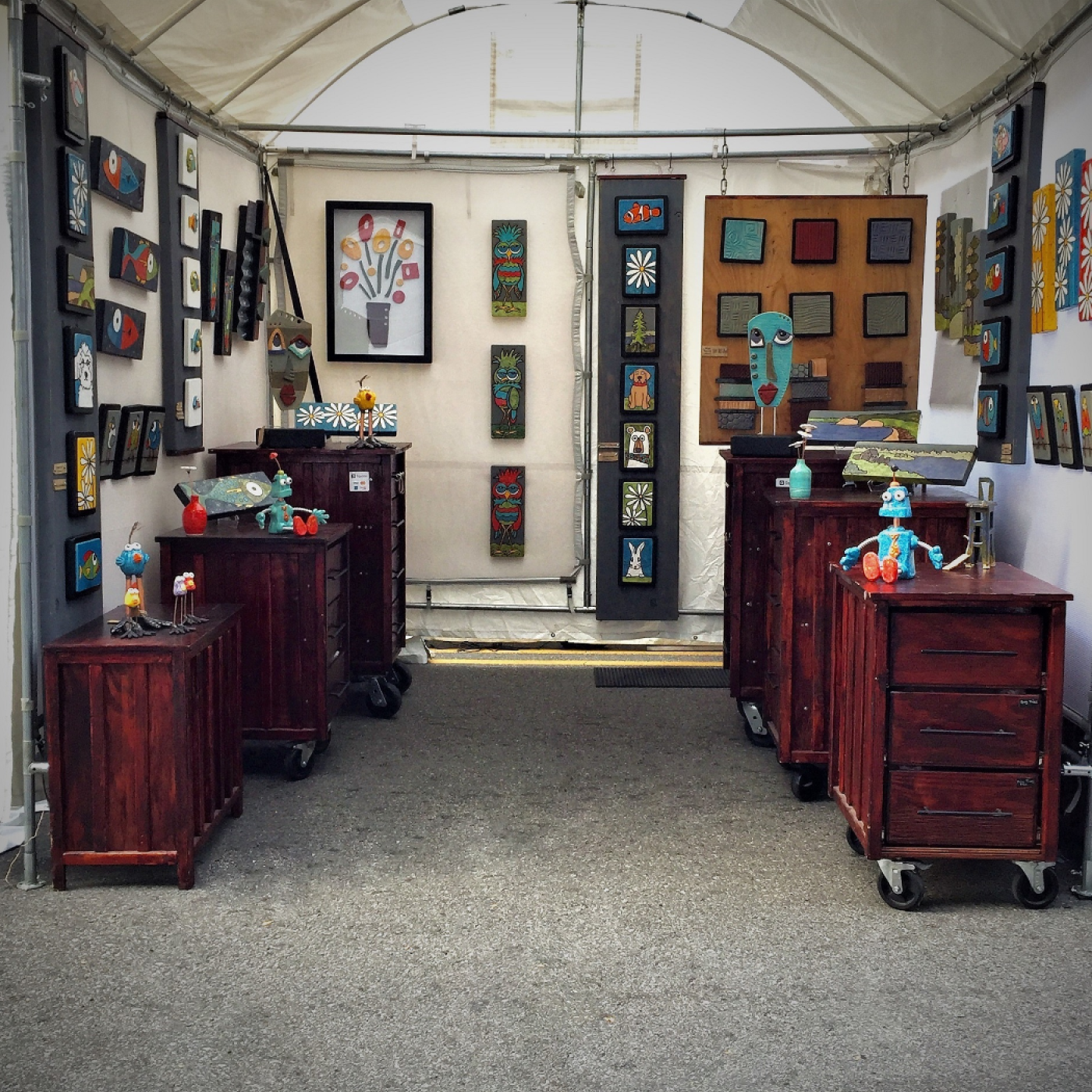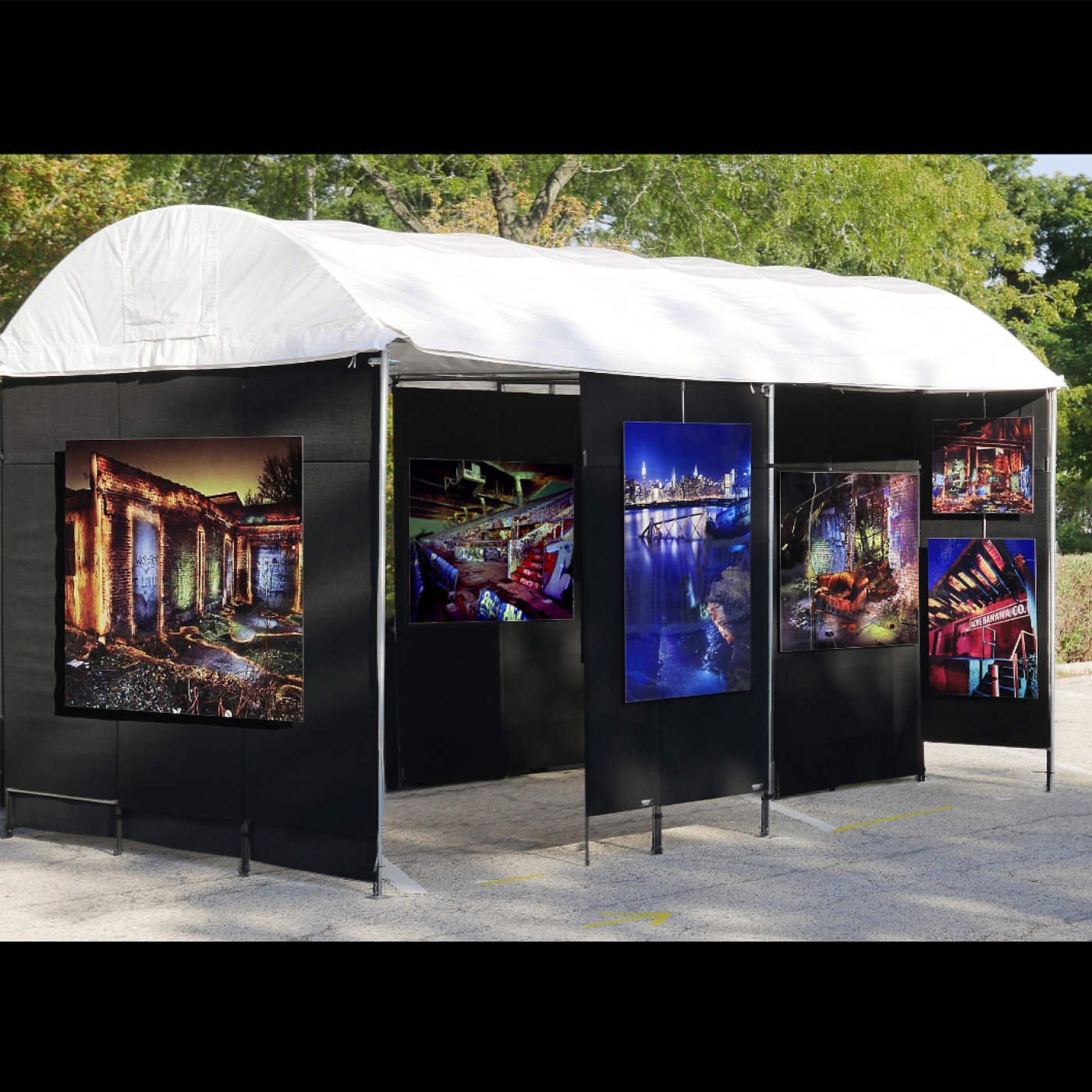Design Your Best Booth Advice to Optimize Space, Attract Attendees

Photo courtesy of Stacey and Corey Bechler, Ceramics
My favorite artist booth is neat, uncluttered, and inviting. A disorganized booth makes it difficult for customers to zero in on one favorite piece.
Replace items throughout the weekend as they sell, rather than cramming the entire inventory in at the start. You want it to look full but not overwhelming.
The best shape for 2D work is an open “U” that optimizes wall space. If you have a 20-foot booth, use walls in the center to display more work while making room for more people. This setup also gives people passing by plenty to see and it beckons them to come inside.
Sculpture and large 3D items flow beautifully in an open-air booth. Displays without a tent allow customers to walk among the art and view it from all sides. Where weather is a factor, consider a similar setup under a canopy.
Bring jewelry as far forward as possible while still allowing people under your tent as they browse. You do not want to make people travel all the way to the back of the booth before they can see your inventory. Display other wearables on racks, using the side and back space for samples, and leave the center open to foot traffic.
Optimize Interior Space
Regarding 2D artists, they should budget for structurally sound walls that allow them to hang pieces of various shapes and sizes. Clean, solid, dark colors serve as the perfect backdrop.
Browse bins are also essential for most 2D mediums, and their placement must be strategic. A perfectly placed bin is accessible and does not block much of the art. Bins stationed outside the front of the booth can block the view of those strolling by.
For 3D mediums, levels within the booth are essential, as they create an attractive visual from outside the booth and separate the pieces out as unique works. You do not need to build full shelves or stands. You could use dressers, apple boxes, or any found object that is in keeping with the style of your work.
If a piece is meant to be viewed from 360 degrees, be sure the customer has a chance to see it that way. Things can also be hung from the top of the booth. Think of your booth space not just from left to right but from top to bottom as well.
Wearables, including jewelry, need to be visible from the street. Consider hanging large, detailed pictures of your work so customers can see the style of the jewelry from outside.
Do not group earrings in one spot and the matching necklace on the other end. Display them as sets whenever possible. Busts are a great option for showing off complementary pieces.
If you have a dress, coat, and scarf that work together, help the customer see they need the whole package!
Engage Your Customers
Making yourself available to engage with your customers is huge. Today, when buying online is always easier, those who visit art shows are looking for a human connection.
Demonstrating at your booth is probably the best way to engage customers. Watching art be made is magical for attendees.
As a bonus, you have time to create more items. If demonstrating is not an option, being at the front of your booth with an open, welcoming energy is the next best option. You are trying to hook customers onto you and your unique view of this world.
If someone stops at your booth, it’s clear you struck a chord with them and they want to know more. Being present and willing to engage is how you turn someone passing by into a customer and a customer into a collector.
More Advice
Remember, your main goal is to pull people off the street. Art fairs are filled with amazingly talented people and their work, and customers can get overwhelmed seeing it all.
Once you have your booth set the way you want, view your booth from a distance; with an open mind, look at what you are presenting. Is it easy to see your work from the street? Is your booth organized/colored in a way that supports the style of your work and makes it stand out?
Would it draw you off the street to take a closer look? Are the pieces easy to see up close if someone does venture into your space?
Are you dressed, adorned, and mentally prepared to proudly present your work? You put tremendous passion, care, and attention into each piece of art. Go that last mile and use that artistic skill to make sure those pieces are presented to the world in the best possible manner.

Photo courtesy of Xavier Nuez, Light Paintings
